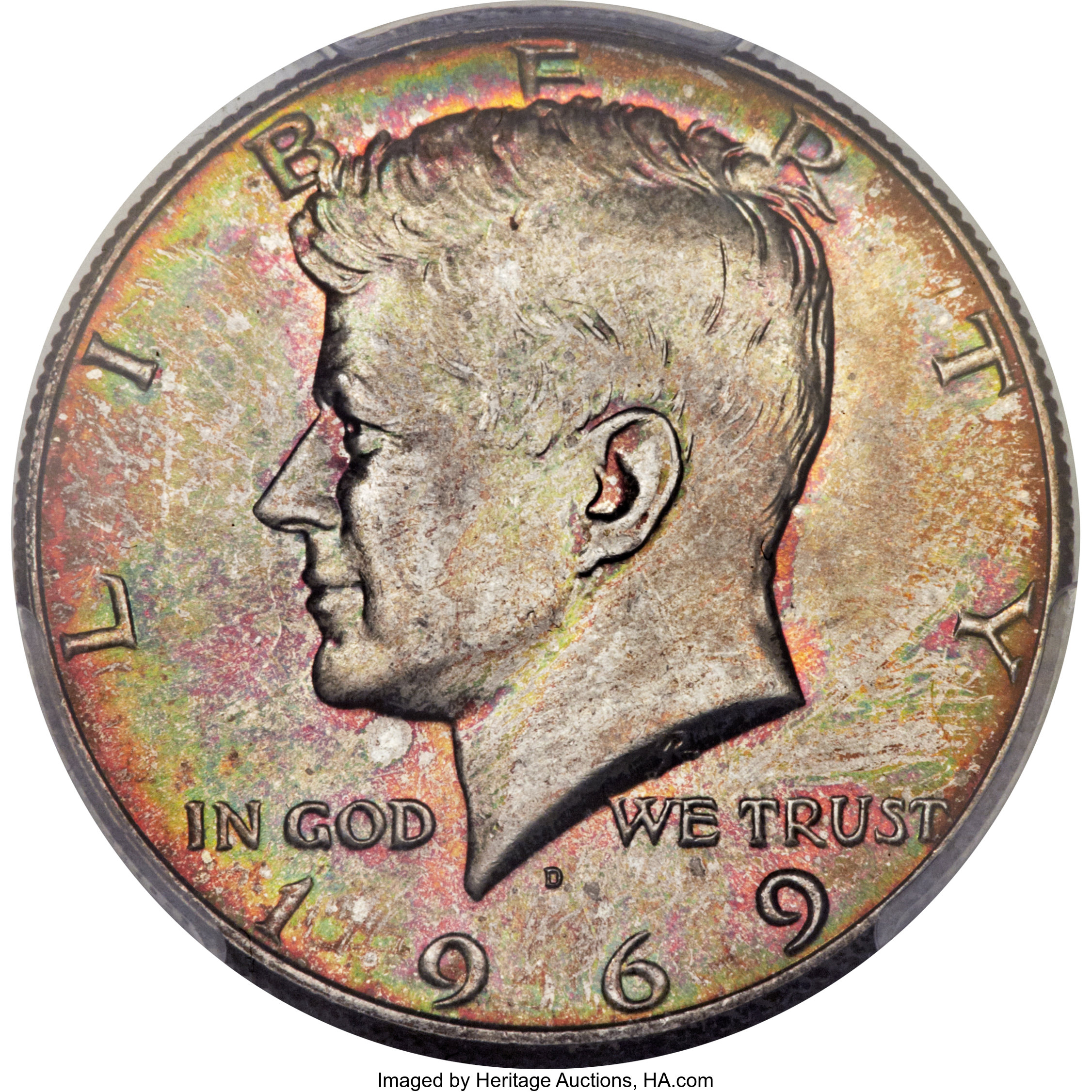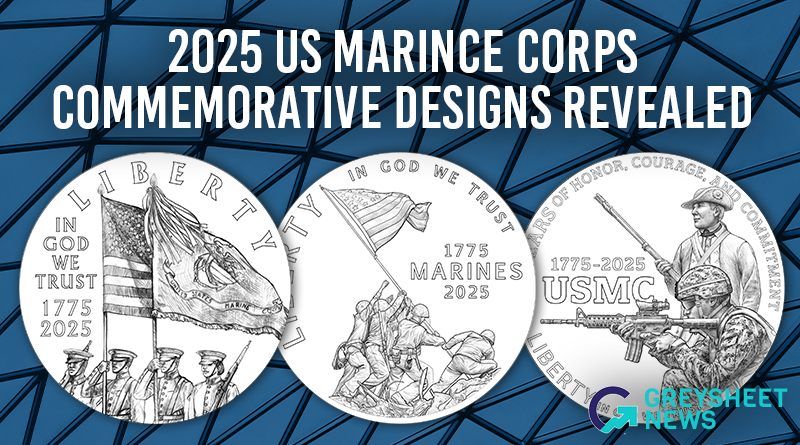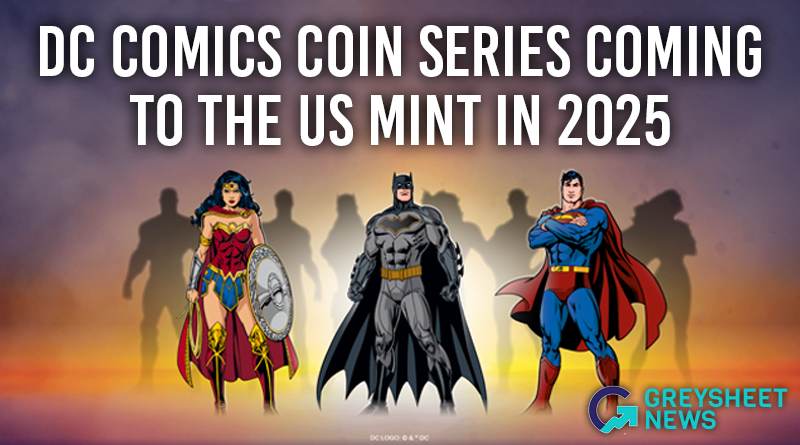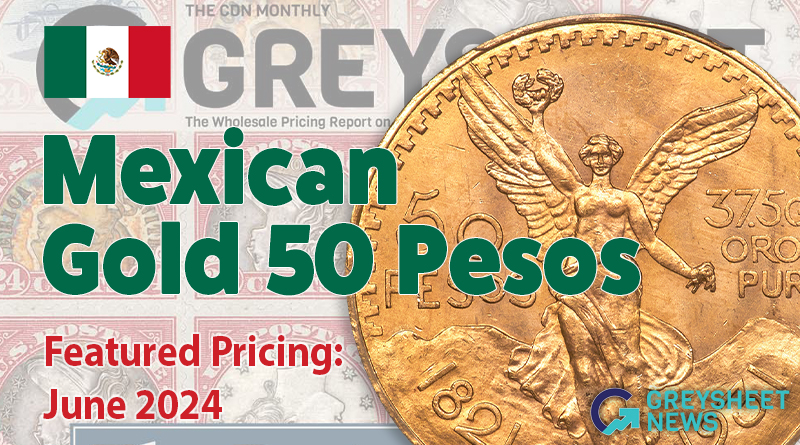Kennedy Half Dollars Remain Big Sellers For Coin Dealers
The love affair Americans still have with Kennedy and the period of sociocultural history he represents is perhaps a major reason why even non-numismatists gravitate toward the Kennedy half dollar. Coin dealers cumulatively report selling millions of Kennedy half dollars each year.
John F. Kennedy has been gone since November 22, 1963, the dark day an assassin’s bullet killed the dashing president in Texas barely 1,000 days into his presidency. The nostalgia of the Camelot legacy surrounding Kennedy and his photogenic first family remains on the hearts and minds of Americans today. It also helps fuel the market for Kennedy half dollars which, 55 years since the issuance of the first strikes in 1964, remain a top collectible.
The love affair Americans still have with Kennedy and the period of sociocultural history he represents is perhaps a major reason why even non-numismatists gravitate toward the Kennedy half dollar. Coin dealers cumulatively report selling millions of Kennedy half dollars each year. Not too shabby, considering the average American probably hasn’t spent or seen a Kennedy half dollar in circulation for the better part of the half century the coin has existed. Mintages of Kennedy half dollars hasn’t exceeded 100 million from a single mint facility since 1976, and that same metric dipped below 50 million after 1979 and fewer than 30 million following the 1983 production year. The last time a Kennedy half dollar was struck for circulation was 2001.
There was a time when the US Mint was issuing hundreds of millions of Kennedy halves on an annual basis. Production of the coin began in January 1964 and the first were released to the public on March 24, 1964, barely four months after Kennedy was killed. His assassination and the days of global mourning following his death spurred Congress to approve a tribute coin honoring Kennedy within mere weeks of his death. Expeditiously moving the coin from concept to reality was aided by the use of existing artwork by mint sculptor-engravers Gilroy Roberts and Frank Gasparro, the former credited with the Kennedy bust on the coin’s obverse and the latter the Presidential Seal depicted on the reverse. During the first year of issue, Kennedy halves were struck in a 90% silver composition as was then standard for larger-denomination circulating coinage.
Even though the coin’s composition transitioned to 40% silver in 1965 and eventually went to a copper-nickel clad format in 1971, countless Americans continue perceiving the Kennedy half dollar as a worthy collectible – perhaps one that some non-collectors mistakenly believe is worth more than face value, even in the cases of worn examples. It’s hard to put a finger on exactly when the half dollar virtually disappeared from circulation. It was, after all, a workhorse denomination much like the quarter prior to the arrival of the Kennedy half dollar in the mid ‘60s. Most collectors and dealers recall the Kennedy half dollar becoming a scarce sighting in circulation as recently as the late 1970s and early ‘80s. Others say the coin was a goner almost from the very beginning of the Kennedy half dollar era in the spring of 1964, when Americans from coast to coast lined up around banks to purchase the new half dollars upon their initial release. Until the expanded use of plastic gaming chips and the introduction of electronic gambling in the last years of the 20th century, Kennedy halves were widely used in the casino circuit, partly explaining why many examples dated from the late 1970s through early 1990s exhibit moderate to even extensive wear.
One fun anecdotal observation of the situation may come from the popular 1970s-era TV game show “Let’s Make A Deal.” In one episode taped in 1974, host Monty Hall offered a woman $50 for each half dollar she had in her purse. The bewildered contestant scrunched her face and, puzzled, blurted, “half dollars? They don’t make those anymore!” Hall wittily replied, “well, all I know is I have a bunch of them sitting at home in a jar!” One could surmise from that on-air conversation, forever memorialized in TV gameshow history, that half dollars were already fading away from general use by the early 1970s. And we now know that even celebrities such as the iconic Monty Hall must have loved Kennedy half dollars, too.
KENNEDY HALVES KEEP DEALERS BUSY
Where did all of those Kennedy half dollars go? Apparently, they’re in the hands of coin collectors – and coin dealers. In fact, several of the major market makers for the Kennedy half dollar series individually report trading hundreds of thousands of Kennedy halves over just the past few years. Who are these dealers selling to? In many cases, they’re trading Kennedy halves with major promoters – the big firms advertising Kennedy halves in major media channels such as general readership magazines, newspapers, and even on television. And, these large promoters are mainly selling their Kennedy half dollars to causal collectors or non-numismatists, who collectively represent a major sector of the series collector base.
“Every time these promoters put out a new offer, [Kennedys] get sold,” notes prominent Montana coin dealer Wayne Miller. “And when the promoters get low, they send me a message.” He has easily handled about a million half dollars over the past few years, including 760,000 halves he has painstakingly sorted through from bank rolls and boxes. While he finds plenty of material from his roll searches, he has made surprisingly few silver finds among those bank boxes. “We found only 40 90% silver halves and about 200 40% silvers,” he reports. “With that much that we went through, you’d think we would’ve seen a lot more of the 90% and 40% silver coins,” laments Miller. “Maybe they have a way of catching these things at the Fed,” he surmises, “who knows?” He says the date that came up with the most frequency among his searches of rolls and bags are the 1776-1976 Bicentennial issues. “We found probably 50,000 of those among the 760,000 coins [we searched].”
He notes many of the halves he searched had been sitting dormant in the vault of a local armored truck company for as long as 10 years. “We found only a smattering of the post-2001 halves – maybe 1,000 total.” While he encountered many worn clad duds in his search, he says he was able to use about 75,000 to 100,000 for his inventory. “There was still enough juice in terms of what we were able to save.”
While Miller builds much of his inventory from the nicest or most unusual of the specimens encountered in his roll searches, he acquires a huge amount of Kennedy half inventory from mint sets. “We’ve broken up about 200,000 mint sets in the last 10 years.” He says cutting up mint sets is profitable because many of these sets trade for as little as pennies over face value, but the individual pieces yield significant premiums when sold as singles. “Like a 1986 mint set is $5.85 bid, but if you break it up the singles are worth over $11.” One might think all of this modern material moves at a snail’s pace, but that isn’t the case for Miller anyway. “There’s a run [of Kennedy halves] from 2007 through 2012 for which we don’t have any coins. I just got an order for 2016 and 2017 coins, so the breaking up of these sets not only helps us get those dates, but our clients pay more for our singles because the pieces they get from us come from mint sets and are nicer than the [examples] that come in rolls.”
Kennedy half dollars are clearly a big-ticket item for Miller, but that doesn’t mean everything in the marketplace is rosy – and even Miller himself admits that. “The coin market is weak. And this is how I know it is weak… In 2014 the US Mint released the 3/4-ounce .999-gold Kennedy half, honoring one of the most beloved presidents of the past 100 years. The first week or two, the mint sold about 50,000 and were selling at the Chicago ANA show for between $3,000 and $4,000 apiece. A week later, they were trading for less than $2,000, and a year later I bought 30 of these things for $900, below the [then] $1,200 CDN bid. And I can still buy these things at melt.”
KENNEDY COLLECTOR BASE STRONG BUT STILL NEEDS TO GROW
Ultimately, Miller says what so many other dealers are saying about the state of the market these days. “We need more collectors, that’s the thing.” He thinks many modern coins, including Kennedy halves, would perform much better if there was a larger base, and if those collectors knew how relatively few of certain issues even exist. “One thing that is interesting to me is that the mintage of the later halves [struck since 2002] is just so low. The latest halves have some of the lowest mintages since 1938.”
Meanwhile, Miller’s East Coast friend and numismatic colleague Stephen Gonzales is staying just as busy fulfilling large orders of Kennedy halves. The Boston dealer says he annually handles hundreds of thousands of Kennedys. “I use a minimum of a half million BU Kennedys every year to have colorized. In 2014 [the 50th anniversary of the series], it was an exceptionally big year for colorizing – that’s partly why the 2014 is so hard to find in quantity,” he says. “The mintage figures are really misleading, as those coins were destroyed through colorization, so the amounts that are available are far and few to be had.”
Still, Gonzales says the overall population of Kennedy halves remains more than ample to meet the current needs of collectors wanting original, unaltered specimens. “Presently, there are way too many Kennedy halves, and demand has really slowed, but the 2002-2014 BU Kennedy rolls are still in demand. I can’t find enough of some of these dates,” he notes. Many of those he can procure end up going to the mass-media advertisers. “I have a couple of promoters that use BU Kennedy halves to colorize for different events.” In all, he says he goes through “probably” 500,000 BU Kennedy half dollars each year and has for the past seven or eight years.
For Gonzales, handling bulk orders of Kennedy halves is nothing new. He began his trek in the hobby several decades ago as a teenager going through bags of coins he bought from his local bank. “I remember a local dealer told me when silver started rising that there was 57 cents worth of silver in the 1965-69 clad Kennedy halves and that I should start pulling them from circulation. I would start going to banks buying rolls of half dollars pulling them out and occasionally get lucky by finding some 90% silver and sometimes even get full rolls of 1964s,” he fondly remembers. “I would map out different routes every day and somedays travel across state lines up to New Hampshire and Maine searching rolls out. I would have to sell whatever I got just to keep the cash flowing – sometimes a friend would go take his cars and buy the rolls while I stayed in town and sorted. Eventually we started putting $1,000 bags together or lead-sealed cans and bring them to the airport to ship to New York.”
By the ‘80s, Gonzales was building roll sets of Kennedy half dollars and supplying them to coin dealers. “I also broke up proof sets and mint sets all day to assemble these sets.” While primarily dealing with Kennedy halves in bulk, Gonzales says basic date-and-mintmark sets are the bread and butter pursuit of the Kennedy half dollar collector base. “I believe the Kennedy half set is still a nice and affordable set for the average collector and will be for many years to come.”
MANY SUCCESSFUL AVENUES FOR SELLING KENNEDY HALVES TO COLLECTORS
There’s no question that many dealers like Miller and Gonzales find their best success selling Kennedy halves in bulk. The composition of bulk orders may include typical BU examples of common clad issues from the 1970s on, or they may take the form of junk bullion lots. The bullion crowd loves bags of 90% 1964-dated Kennedy halves because they are highly recognizable and can be traded for little above spot, even in uncirculated grades. Meanwhile, the 40% silver half dollars struck from 1965 through 1969 are also popular bullion content and widely trade among entry-level silver stackers who can’t afford $1,000 bags of 90% silver junk but can eek out enough cash for buying the 40% silver bags. However, there are many other merchandising avenues for dealers who wish to sell their Kennedy halves to individual collectors.
Whether as colorized novelties for non-numismatic fans of the Camelot era or supergrade specimens for the diehard registry set collector, Kennedy halves afford dealers with plenty of opportunities to sell the series in the numismatic arena while turning a decent profit. One of the most common types of Kennedy half dollar sets includes the basic date-and-mintmark run, which can encompass only the business-strike examples from the Philadelphia and Denver Mints or also incorporate the many special-finish specimens, such as the proofs, reverse proofs, and matte pieces. Retail price points for the basic Kennedy sets vary depending on the complexity of the set and the grade of the individual coins within. Of course, this flexibility means it is possible to market numismatic sets of Kennedy half dollars to a wide range of collectors, from novices working with shoestring hobby budgets to seasoned pros with seemingly endless disposable incomes.
For dealers who wish to add a new dimension to their Kennedy half dollar inventories – and potentially score some big-spending series enthusiasts in the process – diving into the world of Kennedy half dollar errors and varieties, as well as seeking supergrade specimens, might be the way to go. While the regular-issue series key is the 1970-D Kennedy half dollar, a modestly scarce and affordable coin with a mintage of 2,150,000, the real series rarities are numismatic issues with limited mintages or pieces with unusual varieties. Also tough are examples that are, conditionally speaking, a real cut above the rest.
Among the scarce varieties are the 1964 Heavily Accented Hair proof. Of all the major varieties in the series, the 1964 Heavily Accented Hair piece has perhaps some of the greatest lore behind it. As the story goes, former First Lady Jackie Kennedy herself disapproved of the heavily incused lines sculpting the appearance of Kennedy’s hair. Shortly after the issuance of the Heavily Accented Hair proofs (which constitute the earliest proofs) the mint softened Kennedy’s hairlines, thus creating two distinct varieties among 1964 proofs. Bids for MS67 examples of the Heavily Accented Hair list in Monthly Greysheet for $115 and trade in the retail circuit for $150, according to Greysheet sister publication CPG Coin & Currency Market Review (which lists “ask” prices).
Other popular varieties include the 1979-S and 1981-S Type I and Type II Kennedy proofs. These varieties are distinguished by the definition of the “S” mintmark, with the 1979-S Type I bearing a blobby “S” mintmark and that year’s Type 2 exhibiting a slightly clearer mintmark with distinct “holes” inside the top and bottom of the “S.” The 1979-S Type 2 mintmark constitutes the 1981-S Type I mintmark, with the latter Type 2 showing a perfectly clear “S” with bulbous serifs. The Type I proofs of either year serve as the most common variety for their respective year, with the 1981-S Type 2 the scarcer of the two Type 2 varieties. In PR69, the 1979-S Type 2 bids at $20, while the ’81-S Type 2 ticks a bit higher at $22. Retail values are $24 and $26, respectively. Other intriguing issues include the SMS issues from the mid 1960s, the 1998-S silver matte finish, the various 2014 special-finish pieces, and the 90% silver proof strikings that have been regular offerings from the mint since 1992.
As for error varieties, a few of the most popular pieces are the 1964-D doubled die obverse, 1974-D doubled die obverse, and 1982-P no-FG, the latter a result of over-polishing of the reverse near the area of Frank Gasparro’s “FG” initials by the right side of the heraldic eagle’s tail. Meanwhile, the 1964-D doubled die obverse shows strong doubling in “IN GOD WE TRUST,” and the 1974 doubled die obverse also exhibits strong doubling in the same motto, with greatest spread in the word “TRUST.” Both doubled dies bring decent prices, each taking about $40 to $50 in typical MS grades. As for the 1982-P no-FG half, it fetches around $20 in similar condition. Of course, the extent of Kennedy error varieties does not stop here. There are actually many dozens of attributed error varieties in the Kennedy half series, including other doubled dies and no-FG errors. However, those listed above are among the most in-demand with advanced collectors.
Finally, there are the registry set collectors, for whom virtually no Kennedy half dollar is “too” expensive. They want the very best documented Kennedy half dollar sets around, and they’ll seek far and wide (and pay a pretty penny, to boot) in getting their super grade examples. Business-strike, regular-issue Kennedy half dollars are readily available through MS66 and generally become tough around MS67. In grades of MS68 and above they are highly scarce and are often four-figure coins. While modern-day numismatic strikes (those designed for collector sets) routinely grade MS/PR69-70, proofs from an earlier era – say the early ‘80s or before – are tougher to locate in PR69 or above. Similar challenges go for the body of cameo proofs, which represent the standard of quality for proofs since the late 1970s but are scarce for proofs dated from 1964 through just before the Bicentennial era of 1976. This stands to reason that collectors will pay much more for heavily frosted cameo proofs from the 1960s or early ‘70s than they will for more typical specimens with mirror-like devices or those with only light cameo frosting.
With so many regular-issue pieces to choose from, a popular design, and patriotic themes, Kennedy halves are a perfect series for collectors and provide plenty of reasons for dealers to promote these coins to new and veteran hobbyists alike. The Kennedy half dollar is an excellent modern standby offering alongside Lincoln cents and Washington quarters and can just as well serve as a challenging pursuit for diehard collectors as they represent a gateway series for non-collectors who wish to enter the world of numismatics.

Download the Greysheet app for access to pricing, news, events and your subscriptions.
Subscribe Now.

Subscribe to The Greysheet for the industry's most respected pricing and to read more articles just like this.
Source: CDN Publishing












Please sign in or register to leave a comment.
Your identity will be restricted to first name/last initial, or a user ID you create.
Comment
Comments